From John Robb to Jean Paul Gaultier
[ by Charles Cameron — via Christopher Alexander, Arthur Koestler, James Clerk Maxwell, Hermann Hesse, and Wells Cathedral ]
.
My topic today is a comment that John Robb just posted on his FaceBook page. As so often, I’ll proceed by indirection. Here’s a wild DoubleQuote illustrating a blogger’s perceived similarity between the “scissors arch” at Wells Cathedral and one of the models in Jean Paul Gaultier‘s 2009 Spring collection:
**
Some philosophical thinking:
Human knowledge, at an elemental level, can be described as a “transformation” of data.
Complex ideas are built using layers of “transformations” with each layer feeding into the next (think pyramid)
We teach these transformations at home and at school to our children.
We communicate by sharing transformations.
Questions We Need to Answer in the Age of Cognitive Machines:
How many transformations would it take to model all human knowledge?
How deep (how many layers of transformation is human knowledge) is human knowledge? Both on average or at its deepest point?
How broad is human knowledge (non-dependent transformations)?
How fast is the number of transformations increasing and how fast is it propagating across the human network?
**
My interest is in John’s pyramid, considered as a pyramid of arches.
My starting point (with Hermann Hesse‘s Glass Bead Game ever in background) is Arthur Koestler‘s observation in The Act of Creation that the creative spark occurs at the intersection of two planes of thought —
— or to put that another way, that the creative leap is an associative leap between two concepts, disciplines or aspects of knowledge — thus, an arch:
Likewise:
— which in my own DoubleQuotes notation gives us:
— thus, many arches build to a pyramid:
**
Of course, with arches one has to be very circumspect, buecause in rich contexts, they’re not simple creatures:
Among the greatest such arches I know are Taniyama‘s 1955 “surmise” as Barry Mazur puts it, that “every elliptic equation is associated with a modular form” — arching way above my pay grade — an insight that was to bear rich fruit forty years later, in Andrew Wiles‘ proof of Fermat’s Last Theorem; and Erwin Panofsky‘s great book similarly linking the structures of medieval cathedrals and scholastic thought:
**
White we’re on the topic of gothic iconography, another form of arch we might consider is the vesica piscis:
— frequently found in medieval art and architecture:
**
I’m not suggesting, John, that your inquiry and mine are identical — far from it — but that they have a sufficiently rich overlap that an appreciation of one is likely to spark insight in terms of the other.
And with Hesse’s Game, with which I recall from our earlieest conversations you are familiar..
I mentioned Hesse and Christopher Alexander in my bracketed note at the top of this post. It’s my impression that both were striving for a similar encyclopedic architecture to the pyramid John proposes. Hesse on the Glass Bead Game:
All the insights, noble thoughts, and works of art that the human race has produced in its creative eras, all that subsequent periods of scholarly study have reduced to concepts and converted into intellectual values the Glass Bead Game player plays like the organist on an organ. And this organ has attained an almost unimaginable perfection; its manuals and pedals range over the entire intellectual cosmos; its stops are almost beyond number. Theoretically this instrument is capable of reproducing in the Game the entire intellectual content of the universe.
And Hesse is clear that individual moves within the games take the form of parallelisms, resemblances, analogical leaps — writing, for instance:
Beginners learned how to establish parallels, by means of the Game’s symbols, between a piece of classical music and the formula for some law of nature.
Speaking of the playing of his great Game, Hesse said:
I see wise men and poets and scholars and artists harmoniously building the hundred-gated cathedral of the mind.
And Alexander? His book A Pattern Language is pretty clearly his own variant on a Glass Bead Game, following on from what he terms his Bead Game Conjecture (1968 – p. 75 at link):
That it is possible to invent a unifying concept of structure within which all the various concepts of structure now current in different fields of art and science, can be seen from a single point of view. This conjecture is not new. In one form or another people have been wondering about it, as long as they have been wondering about structure itself; but in our world, confused and fragmented by specialisation, the conjecture takes on special significance. If our grasp of the world is to remain coherent, we need a bead game; and it is therefore vital for us to ask ourselves whether or not a bead game can be invented.
**
Gentle readers:
For your consideration, delight, temptation, confusion or disagreement, here are three more of Gaultier’s arches, as perceived by Kayan’s Design World:

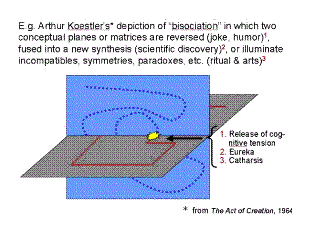
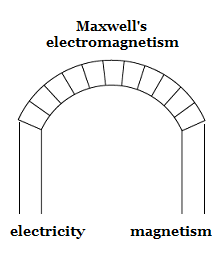
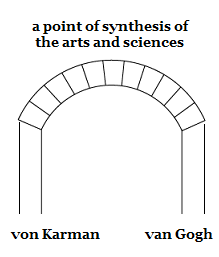
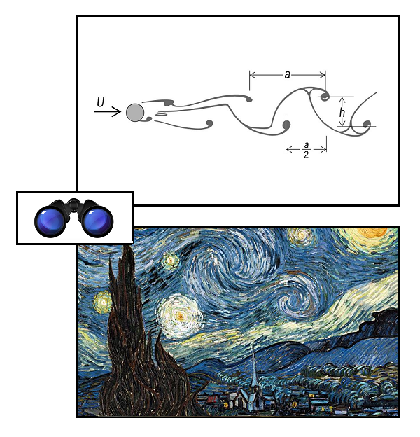
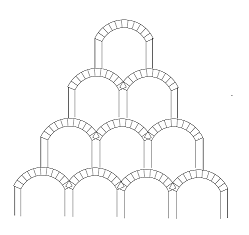
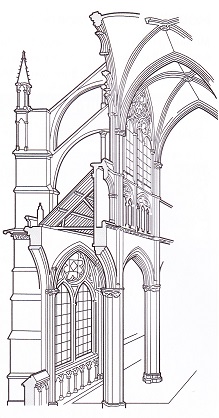
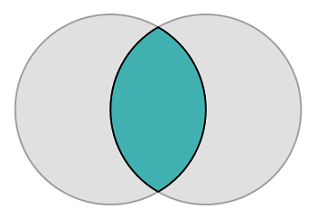







February 4th, 2016 at 2:37 pm
Wonderful post. If I may riff…
.
There are many kinds of arches, and I have long been fascinated by arches in architecture. Gaudi is my exemplar of the use of catenaries, bringing both the art and the sacred to his work in Barcelona. Frei Otto was a German contemporary and made his designs by modelling with fluid strings and chains, then inverting (man muss immer umkehren) for the solid form.
.
The catenary is also the root form in natural arches, as it most naturally distributes the weight overhead of a flat-topped form. Many of the arches we see in architecture do not conform to the same forces, having sloped roofs necessary for shedding heavy weather. But in the deep, caves, however tall, follow catenary form.
.
To push things further, there is something to this formula to abstract:
.
P = (( T – D ) / W) V
.
where Velocity = 0 in a building, while Thrust involves vertical elements, and Drag the horizontal. Inverting, the greater Weight can be supported by decreasing the ratio of horizontal to vertical elements. This inversion allows that the intangible, soaring sacred may be inversely related to power, that the manifestation of the arch with the least amount of material has a relation to peace in a timeless (no-Velocity) frame of reference.
.
I hope you enjoy the experience of considering this riff, as it may not conform to normal theory.
February 4th, 2016 at 5:27 pm
I’m fine with the arch discussion, but I think that John Robb needs to define “transformation.”
February 4th, 2016 at 5:55 pm
Steve:
Lovely. It reminds me of the philosopher Cornelius Castoriadis, whom wrote:
And Antonio Gaudi — yes!
.
**
.
From a “long read” poem of mine, Vanishing Point:
.
.
February 4th, 2016 at 8:04 pm
John’s tweeted response:
.
.
Yup.
February 4th, 2016 at 9:10 pm
Alexander’s presentation has some interesting observations about centers being the key to internal cohesion:
Pg 92:
“The degree of wholeness which a carpet achieves is directly correlated to the
number of centers which it contains. The more centers it has in it, the more
powerful and deep its degree of wholeness.”
Pg 94:
“All centers are made of many internal local symmetries, which produce
smaller centers within the larger center (most of them not on the main axis
of the larger center), and have a very high internal density of local
symmetries. It is this property which gives them their power”
Pg 102:
“the greatest structures, the greatest centers, are created not within the
framework of a standard pattern — no matter how dense the structures it
contains — but in a more spontaneous frame of mind, in which the centers
lead to other centers, and the structure evolves, almost of its own accord”
.
This all suggests harmonious and cooperating centers are the key to emergence, but it also brings to mind the opposite condition – disruption.
Centers can unite but also destroy, such as with John Boyd’s oft stated objectives to generate “non-cooperative” centers of gravity to get centers working against each other and disrupt cohesion.
.
From Organic Design For Command and Control:
“He who can generate many non?cooperative centers of gravity magnifies friction. Why? Many non?cooperative centers of gravity within a system restrict interaction and adaptability of system with its surroundings, thereby leading to a focus inward (i.e., within itself), which in turn generates confusion and disorder, which impedes vigorous or directed activity, hence, by definition, magnifies friction or entropy.
Without the implicit bonds or connections, associated with similar images or impressions, there can be neither harmony nor individual initiative within a collective entity, therefore, no way that such an organic whole can stay together and cope with a many?sided uncertain and ever-changing environment.
Without implicit bonds or connections, we magnify friction, produce paralysis, and get system collapse.”
February 5th, 2016 at 2:55 pm
The above formula is actually Boyds Energy-Maneuverability Equation. Adapted.
Alexander has his primary work on defining centers as an appendix in ‘The Nature of Order: The Phenomenon of Life.’ An interesting part of a great book.
There is a hint of wisdom in thinking of centers as not only where, but when and who you are spending time with, how much time, and how rewarding that time is. There is also an equation for this, but I’m still working on the details.
With reference to non-cooperative centers of gravity, Tolkien on the Ainulindalë, the unfolding symphony of the universe with counterpoint:
“And thou, Melkor, shalt see that no theme may be played that hath not its uttermost source in me, nor can any alter the music in my despite. For he that attempteth this shall prove but mine instrument in the devising of things more wonderful, which he himself hath not imagined.”
I think Tolkien was suggesting the All-Father put humans in the world to invent jazz, to bring wonder and surprise to the all-knower.
February 5th, 2016 at 8:16 pm
Ah, got it Steve, thanks. Your analogy threw me at first.
I guess the flying buttresses reducing horizontal load helps accomplish that inversion. Although, now I’m going to need some time to contemplate the implications on those runway models…
February 5th, 2016 at 8:40 pm
Steve:
Aha!
.
That Ainulindalë / Music of the Ainur passage may be my favorite in all Tolkien — Leaf by Niggle is also wonderful, but lighter.
February 6th, 2016 at 3:39 pm
Grurray: I find myself contemplating those implications as well.
.
Charles: A recording of Tolkien alerted me to the underlying vocal rhythms of his writing, which allowed me to get through some of his thicker sections by speaking them aloud. By the way, nine syllable lines are unusual, but permeate Vanishing Point, and give them an open-ended quality. There’s a similarity to Robin Williamson’s ‘Five Denials on Merlins Grave’, but that apparently does a good job with the rules of Celtic poetry which are so complex I treat them like quantum anything and try to not even try.
.
Castriodis: “Why could we not start by positing a dream, a poem, a symphony as paradigmatic of the fullness of being and by seeing in the physical world a deficient mode of being…” John Michael Greer explored this as well, tho not to the same conclusion: “Abstractions subjected to sustained reflection promptly dissolve into an assortment of unrelated figurations; figurations subjected to the same process dissolve just as promptly into an assortment of unrelated sense data, given what unity they apparently possess by nothing more solid than the habits of the human nervous system and the individual mind.”
.
A valuable distinction for me (spun from Mortimer Adler) is of experienced works, versus factual. Experience cannot be understood from a summary. The sight of a book provides a stimulus for the remembrance of the experience of it, which abstracts and summaries cannot provide. Greer is distinguishing sensate figuration (the experience) from abstraction from reflection.
.
I’m ruminating the practical applications of this due to Theo Compernolle: “The first thing we have to do is to realize that when we’re talking about three brains… the reflex brain, the reflecting brain, and the archiving brain…”
.
“But your archiving brain is in competition in your brain with your thinking brain, for the same, I would say, processor in your brain – working memory.” It’s an interesting article for it’s practical aspects concerning multitasking. It also makes clear that we need that more free-floating time, into dreamspace, in order to incorporate information and insight. Without that, we are only able to live in current-time. Can there be fullness of being of a dream without that memory? Or is the world made of selected combinations of responses, where to fully remember the experience that leads to the combination slows response times such that simpler responses get to resources (score a goal, in basketball terms) so much quicker that in-depth reflection is selected out?
February 6th, 2016 at 3:45 pm
Sources, by the way:
http://thearchdruidreport.blogspot.com/2013/11/toward-green-future-part-two-age-of.html
.
http://thearchdruidreport.blogspot.com/2013/11/toward-green-future-part-three.html
.
http://mercola.fileburst.com/PDF/ExpertInterviewTranscripts/Interview-TheoCompernolle-BrainChains.pdf